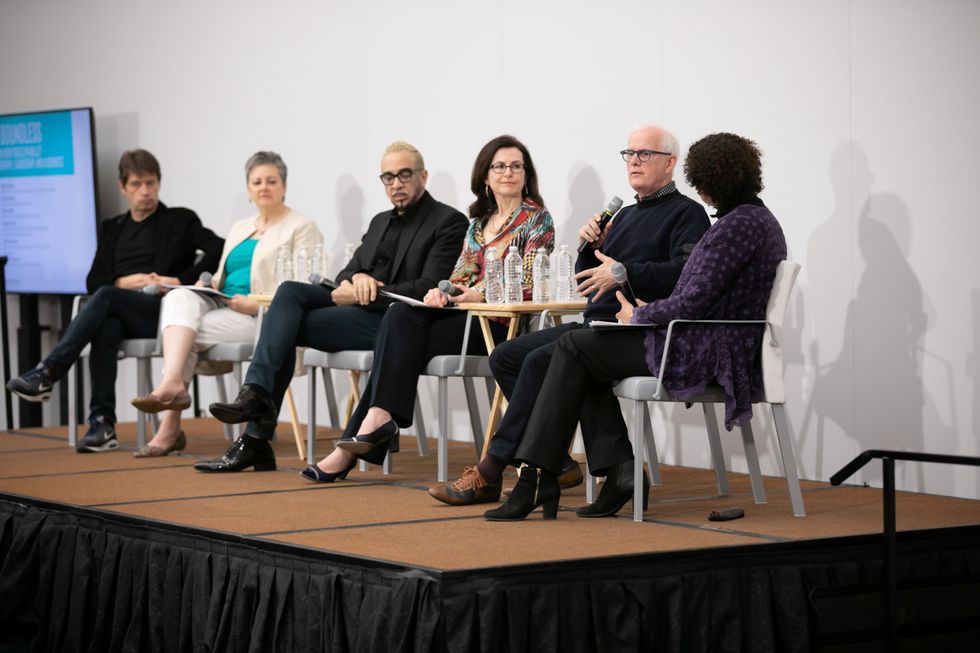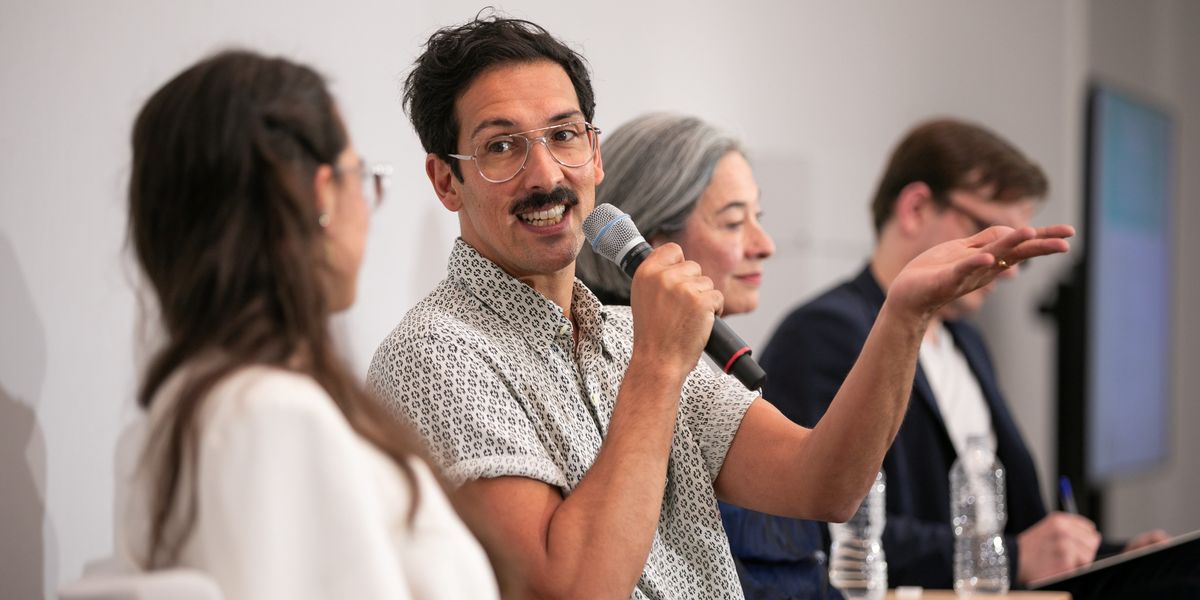SF Ballet’s “Boundless” Symposium Explores How Ballet is Evolving
The first week of San Francisco Ballet’s Unbound: A Festival of New Works was all about new ballets, with 12 world premieres by the likes of Justin Peck, Dwight Rhoden and Annabelle Lopez Ochoa. The second weekend provided time to reflect, as artists and influencers gathered for “Boundless: A Symposium on Ballet’s Future.”
Dance Magazine
sat in on two sessions.

Virginia Johnson, Helgi Tomasson and Marina Harss. Photo by Chris Hardy, courtesy SFB
On Friday, April 27, writer Marina Harss moderated “Unbound: A Conversation on the Future of Ballet” with SFB artistic director Helgi Tomasson and Dance Theatre of Harlem artistic director Virginia Johnson. The wide-ranging discussion offered several takeaways:
- Johnson and Tomasson agree that being a great ballet dancer is not determined by ethnicity, gender or body type—although height still plays a role because of partnering.
- They also believe that while classical technique is the essential foundation of ballet, they aren’t precious about it—technique should be allowed to evolve so that ballet feels relevant to contemporary audiences.
- Both directors want dancers with personality and expressiveness, not just showstopping tricks.
- Johnson observed that there are more women artistic directors than ever before, and she believes those opportunities will continue to grow.

Patrick Armand, Andrea Yannone, Dwight Rhoden, Celia Fushille, Helgi Tomasson and Virginia Johnson. Photo by Chris Hardy, courtesy SFB.
Johnson moderated an in-depth session about diversity and inclusion on Sunday. “Boundless: Fostering New Voices in Ballet Choreography, Leadership and Audiences” brought together Tomasson, SFB School director Patrick Armand, Smuin Contemporary American Ballet artistic director Celia Fushille, Complexions Contemporary Ballet artistic director Dwight Rhoden and SFB director of education and training Andrea Yannone.
- All agreed that diversity makes ballet schools and companies relevant to today’s audiences, but Armand reported that SFB School struggles to recruit young dancers from diverse cultural and economic backgrounds.
- Rhoden got cheers when he brought up the importance of creating ballets that use themes, music and collaborators that diverse communities can relate to.
- Fushille agreed, adding that ballet-dancer contestants on TV shows like “So You Think You Can Dance” have helped make ballet seem more accessible and less elitist.
- Yannone said that diversity in ballet is about nurturing anyone who wants to dance, and credits programs like SFB School’s Dance in Schools & Communities, Boston Ballet’s Adaptive Dance Program, ABT’s Project Plié and the International Association of Blacks in Dance with fostering wide-ranging inclusion.
If there was unifying theme throughout symposium, it was that change will take time, but ballet is truly evolving to reflect the times we live in and represent everyone who dances, choreographs and enjoys it.





